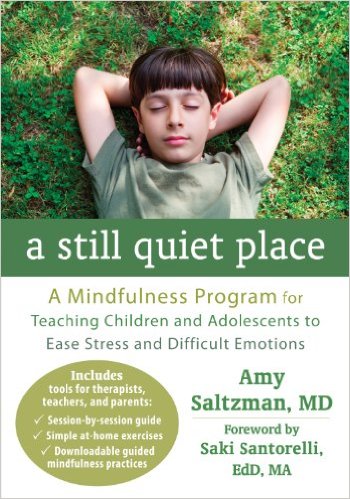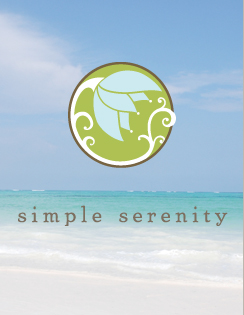While performing research for a mindful parenting guidebook I am in the midst of writing, I have had the opportunity to come across many well-written, educational, and helpful books on introducing and teaching mindfulness to children and adolescents. A Still Quiet Place, by Amy Saltzman M.D., is a book I would like every parent, caregiver, grandparent and teacher to read. This book offers, research proven, practical steps in how to assist our young people to learn the foundations of resilience, focus, and kindness. A Still Quiet Place provides step-by-step instruction in learning about mindfulness, making teaching mindful living to young people a successful and fulfilling endeavor.
 Teachers, therapists, and counselors (and of course parents) can benefit from this book as it offers clear steps and useful activities for teaching the principles of mindfulness in a variety of settings. A Still Quiet Place is an 8-week mindfulness program to help children and adolescents deal with the stress and anxiety in their lives, learn to be compassionate and understanding toward themselves and others, and increase their communication skills. The curriculum is based on Dr. Salzman’s original 8-week program that has helped many young people face the challenges in their lives while increasing their mental, physical, and emotional health and well-being. This program takes the mystery out of the practice of mindfulness. Down to earth and user-friendly, A Still Quiet Place is a must-read for anyone who has an opportunity to teach valuable life skills to our youth.
Teachers, therapists, and counselors (and of course parents) can benefit from this book as it offers clear steps and useful activities for teaching the principles of mindfulness in a variety of settings. A Still Quiet Place is an 8-week mindfulness program to help children and adolescents deal with the stress and anxiety in their lives, learn to be compassionate and understanding toward themselves and others, and increase their communication skills. The curriculum is based on Dr. Salzman’s original 8-week program that has helped many young people face the challenges in their lives while increasing their mental, physical, and emotional health and well-being. This program takes the mystery out of the practice of mindfulness. Down to earth and user-friendly, A Still Quiet Place is a must-read for anyone who has an opportunity to teach valuable life skills to our youth.
On a more serious note, childhood stress is on the rise in the United States. This stress robs our nation of its promise: compassionate and engaged young people. Our children are our greatest treasure – and they are stressed, unhappy, and at a deeper level, sometimes suicidal. The time is now for support, education, and encouragement for living mindfully and participating in life with vitality and engagement. According to the 2010 Children’s Defense Fund report called The State of America’s Children, the United States ranks first among industrialized countries in gross national product, health expenses, and, interestingly enough: billionaires. Yet it ranks very low in teenage math and science scores and last in childhood poverty, gun violence, and birthrates for adolescents. According to this report, once every second – every second – a child is suspended; every three hours a child or teen is killed by a firearm; every five hours a child or teen takes their life; and every six hours a child or teen dies from abuse or neglect.
Clearly, it is time to act. Our first step must be to reach our children directly. We must teach them to pay attention on purpose – to be present and kind as they experience life. They must learn to manage their stress and live mindfully. This book is a guide and a valuable resource for teaching mindful living at an early age. We owe this to our children. A Still Quiet Place is an accomplished guide for bringing mindfulness more fully into the classrooms, community settings, and homes that our children inhabit.
On a personal note, I am a certified Mindfulness Based Stress Reduction educator, receiving my education and certification from the University of Massachusetts Center for Mindfulness in Medicine, Healthcare, and Society, under the instruction of Jon Kabat-Zinn, Saki Santorelli and staff. I know firsthand the architecture of Dr. Salzman’s mindfulness program. I cannot recommend it highly enough, as it is based on a long standing successful and effective program for stress reduction, a lifetime of personal experience, an unstoppable intention to ease the stress and emotional struggles of our children, and a wish to begin healing our world. Whether used in whole or in part, this program is a valuable resource and the book a must-have for anyone who cares about the health and well-being of our children.
A Still Quiet Place by Amy Saltzman M.D. on Amazon.com

